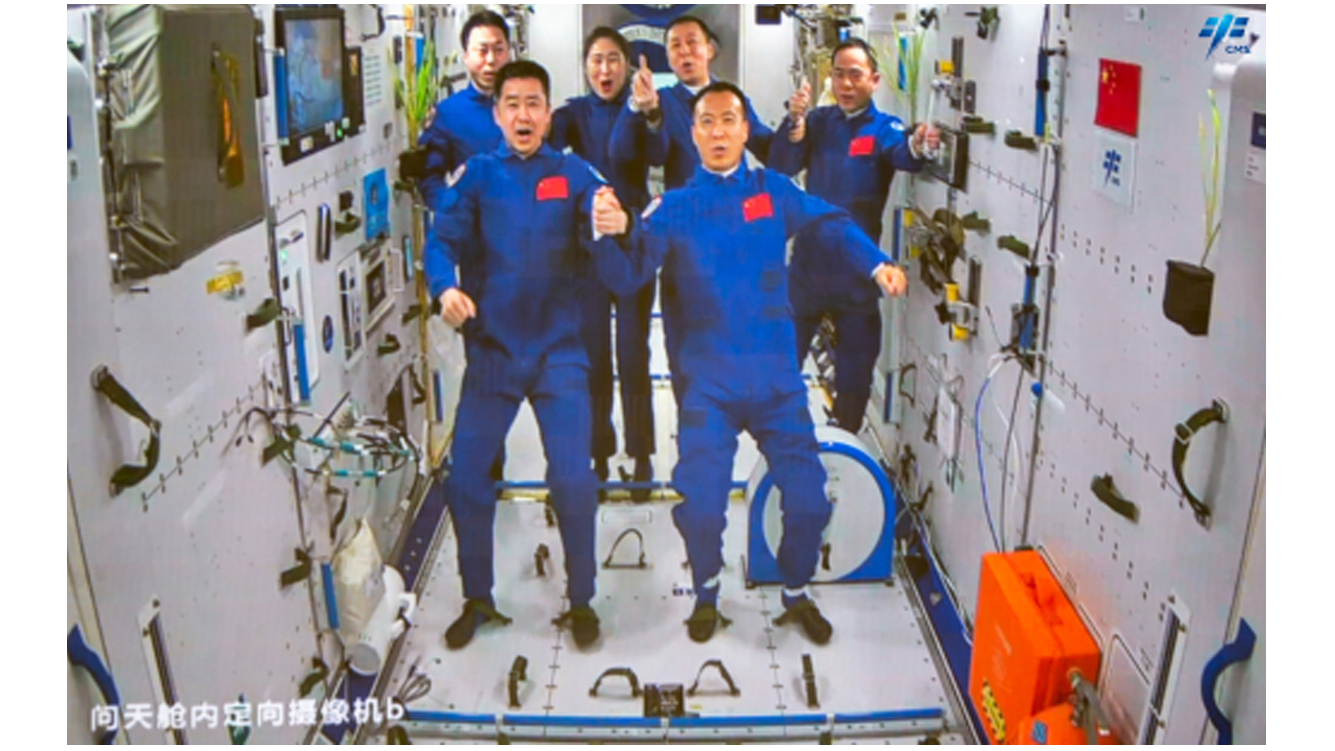China may enlarge its Tiangong space station

Tiangong's assembly phase may not be over after all.

Fresh off achieving another milestone in its space station program, China may end up enlarging the orbiting complex and perhaps use it to help evaluate technologies needed for possible human exploration of the moon.
China is in position to further promote construction of its Tiangong space station in the future, explained Wang Xiang, space station system commander at the China Academy of Space Technology (CAST).
"As a space station, we are at the beginning of our application and development," Wang told China Central Television (CCTV).
Related: The latest news about China's space program
Extension module?
China launched two modules to the T-shaped Tiangong this year, supposedly completing the three-module orbiting complex. But Wang said that an "extension module" could be launched to dock with the forepart of Tiangong. That module would leave more space for incoming vehicles to dock and offer a larger and more comfortable environment for crew members.
This evolving design would also provide more space for scientific experiments, both inside and outside the station, Wang said.
"For example, if we're going to carry out manned lunar exploration in the future, then we have some of the spacecraft technologies — even some of the new generation of spaceship technologies — that can be verified in outer space," Wang told CCTV.
Breaking space news, the latest updates on rocket launches, skywatching events and more!
Following the plan
China's future station ambitions have been bolstered by the recent return to Earth of the Shenzhou 14 mission, which spent six months aboard Tiangong.
The Shenzhou 14's return capsule, carrying astronauts Chen Dong, Liu Yang and Cai Xuzhe, parachuted into the Dongfeng landing site in north China's Inner Mongolia on Sunday (Dec. 4).
"We completed the in-orbit missions following the plan. The astronauts all went out of the cabin in good health and everything was implemented as planned. The entire manned flight was perfect, without any abnormality," Shao Limin, deputy technological manager of manned spacecraft systems at CAST, told CCTV.

Solid foundation
Xu Chong, director of the China Astronaut Research and Training Center, said that the Shenzhou 14 crewmembers are all in good shape, both mentally and physically, after their 183-day mission.
"Their return and landing were smooth, too. So it has laid a solid foundation for the follow-up work on medical guarantee, medical and health monitoring and the whole technological system throughout the space station operational period," Xu told CCTV.
The Shenzhou 14 crew flew to the space station on June 5. During their stint in space, they oversaw five rendezvous and dockings, performed three spacewalks and conducted a variety of science and technology experiments.
Many firsts
While in Earth orbit, the Shenzhou 14 trio chalked up many firsts in China's space history — for example, the first rendezvous and docking between two 20-ton-level spacecraft and the first in-orbit transposition of a space station module. They also set a record of making three spacewalks on a single mission.
Before departing for Earth, Shenzhou 14 also performed China's first-ever crew handover, passing command of Tiangong to the newly arrived Shenzhou 15 astronauts. The Shenzhou 15 crew – commander Fei Junlong, along with Deng Qingming and Zhang Lu — arrived at Tiangong on Nov. 30.
"According to the standards of the mission outline, the Shenzhou 14 manned mission was a complete success," Lin Xiqiang, deputy director of the China Manned Space Agency (CMSA), told CCTV.
"With the Shenzhou 14 and Shenzhou 15 finishing the in-orbit rotation and Shenzhou 14 returning to the Earth safely, our planned mission of building the space station has completed," Lin concluded.
Leonard David is author of the book "Moon Rush: The New Space Race," published by National Geographic in May 2019. A longtime writer for Space.com, David has been reporting on the space industry for more than five decades.Follow us on Twitter @Spacedotcom or on Facebook.

Leonard David is an award-winning space journalist who has been reporting on space activities for more than 50 years. Currently writing as Space.com's Space Insider Columnist among his other projects, Leonard has authored numerous books on space exploration, Mars missions and more, with his latest being "Moon Rush: The New Space Race" published in 2019 by National Geographic. He also wrote "Mars: Our Future on the Red Planet" released in 2016 by National Geographic. Leonard has served as a correspondent for SpaceNews, Scientific American and Aerospace America for the AIAA. He has received many awards, including the first Ordway Award for Sustained Excellence in Spaceflight History in 2015 at the AAS Wernher von Braun Memorial Symposium. You can find out Leonard's latest project at his website and on Twitter.
